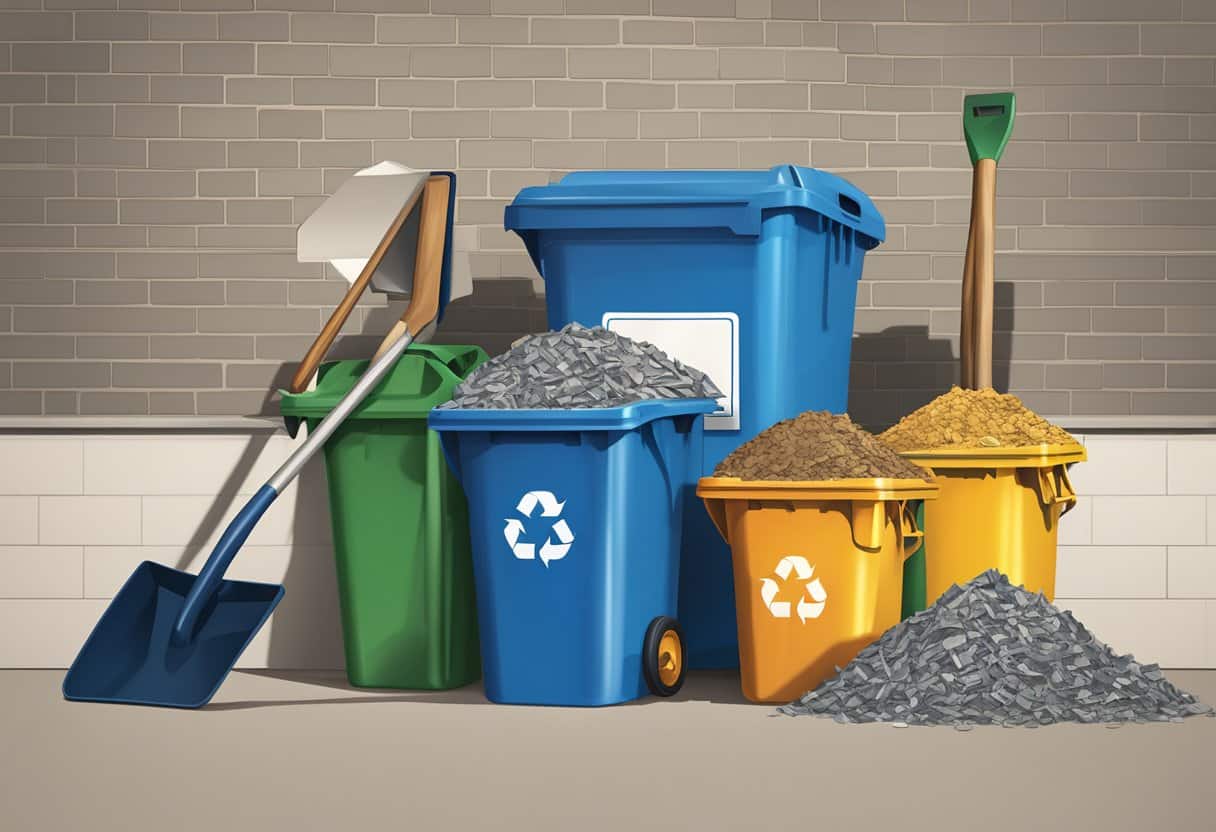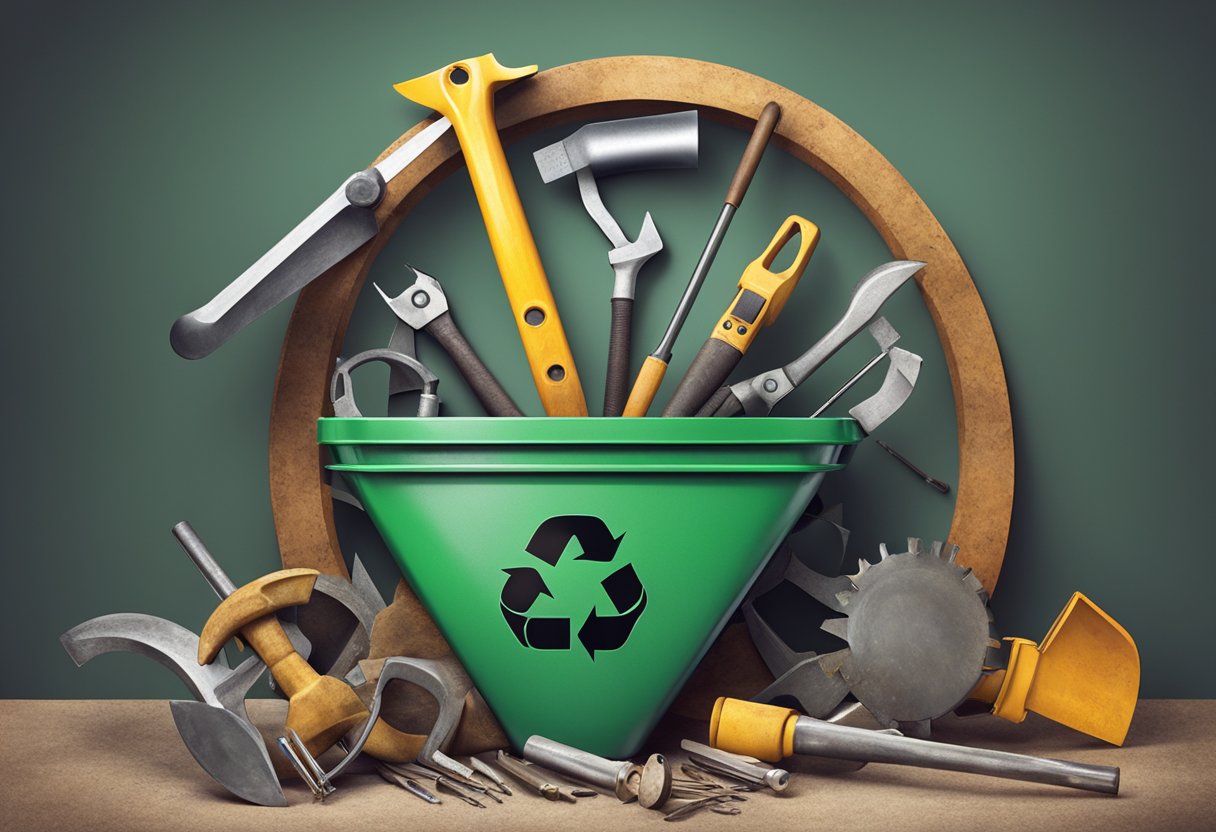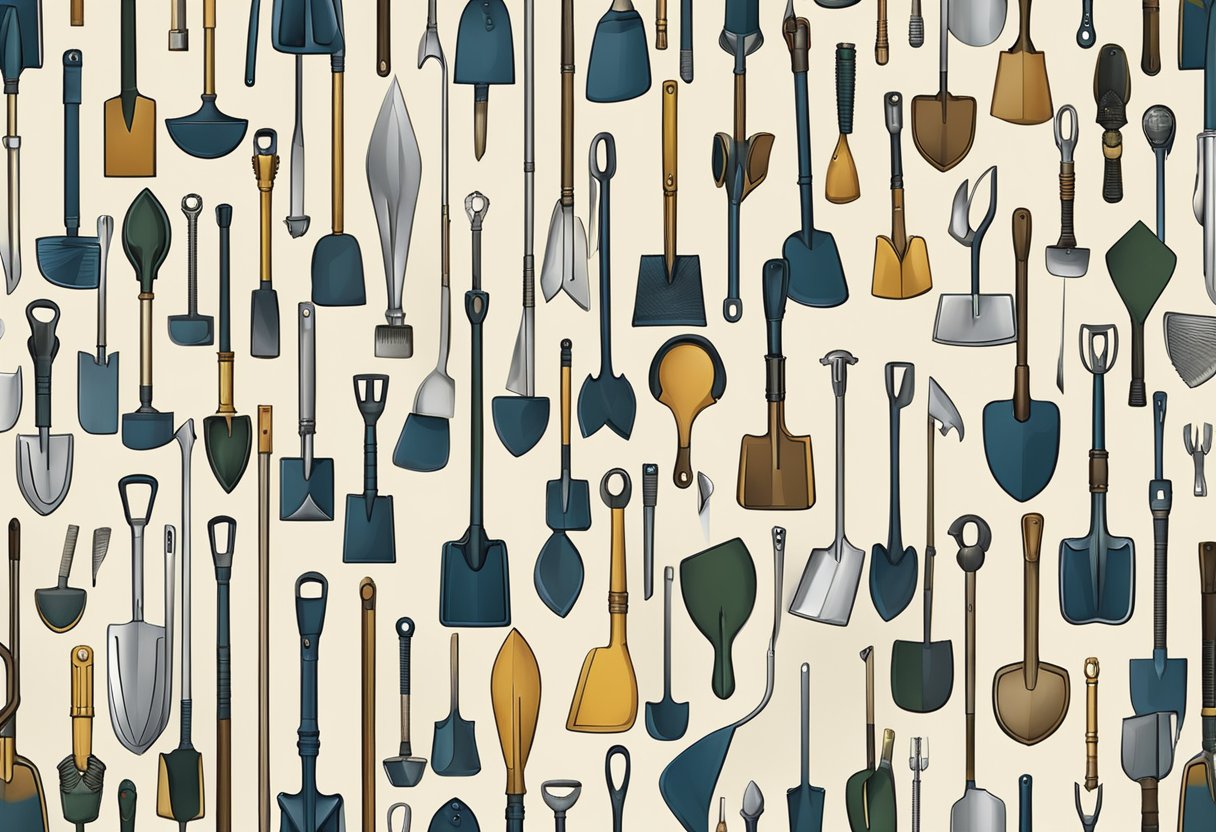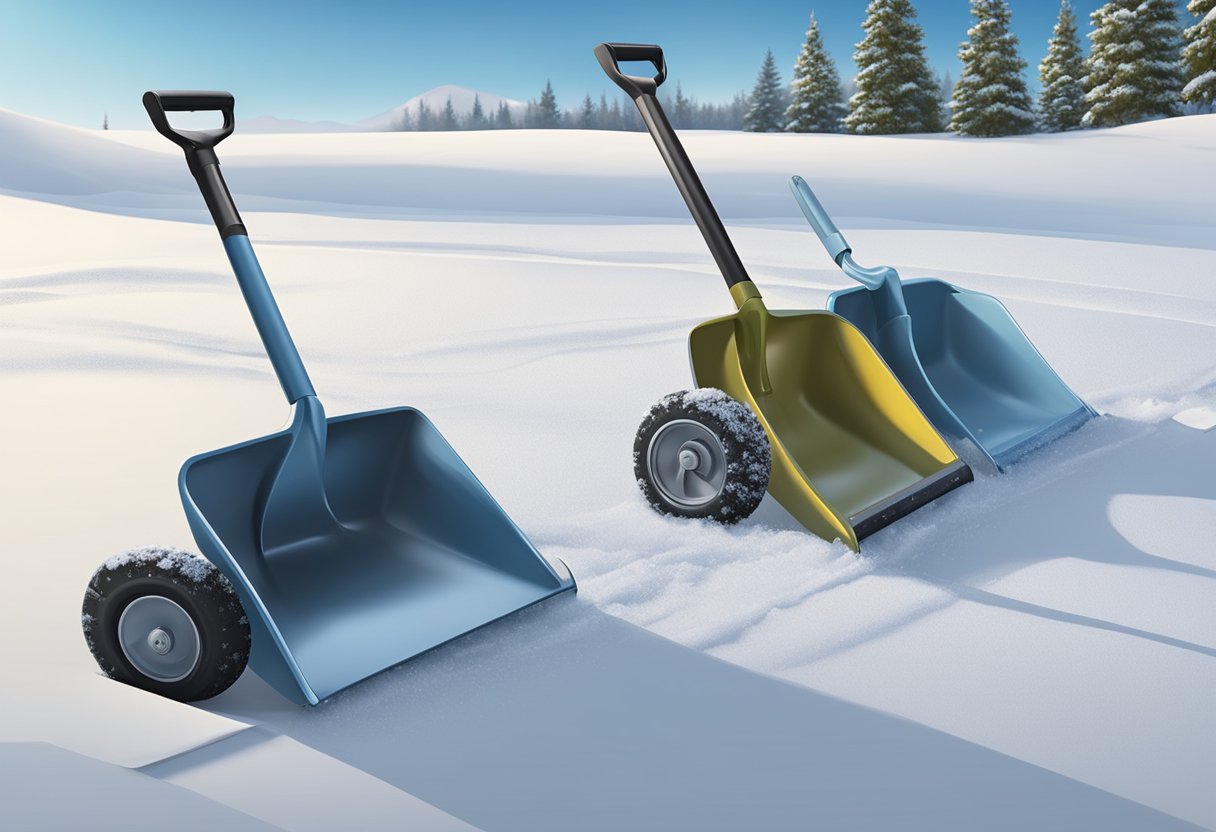In tackling the issue of old shovel recycling and disposal, we recognize an opportunity to minimize waste and contribute positively to environmental conservation efforts. Shovels serve us well in gardening, construction, and snow removal, but they do reach an end to their useful life, prompting us to find environmentally friendly methods in recycling and disposal of old shovels.
Table of Contents
Importance Of Recycling And Disposal Of Old Shovels
Before considering recycling and disposal of old shovels assess the shovel’s condition to determine whether it can be refurbished, repurposed, or is genuinely at the end of its lifecycle.
If recycling is the chosen path, explore the proper disposal methods for shovel parts you can not recycle, ensuring they do not contribute to landfill overfilling or pollution. This proactive stance benefits the environment and aligns with broader waste management regulations and community efforts to promote recycling.
Recycling and disposal of old shovels is a responsible environmental practice. Metal components of shovels can be repurposed, conserving raw materials and reducing the need for mining activities, which often disrupt ecosystems. Additionally, recycling saves energy that would otherwise be expended in manufacturing new tools from virgin materials.
Plastic components, often found in the handles, can also be recycled. This recycling process diverts waste from landfills, extends the lifespan of materials, and reduces plastic accumulation in the environment. Here’s a quick breakdown:
- Energy Conservation: Recycling metals can save approximately 75% of the energy produced by new metals.
- Waste Reduction: Proper recycling can significantly lower the volume of waste, leading to less landfill usage.
- Resource Preservation: Valuable resources like steel and aluminum are finite; recycling them delays depletion.
Proper disposal of shovels involves separating metal, plastic, and wood components before recycling. Some recycling centers require separating materials, so it’s best to check local guidelines.
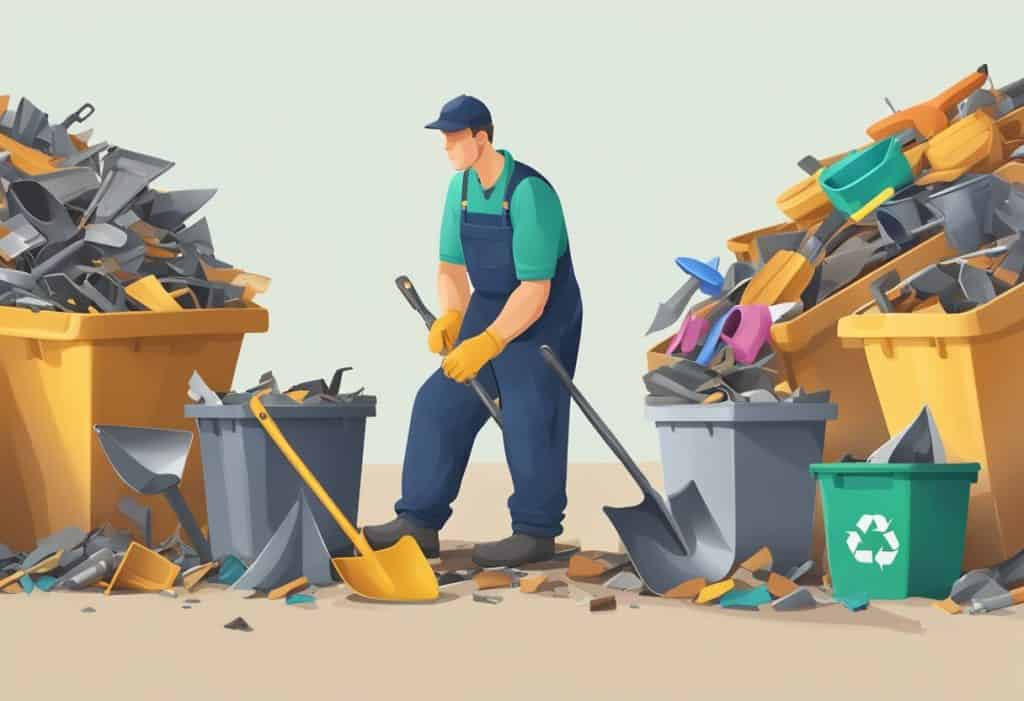
Assessing The Condition Of Old Shovels
Before disposing or recycling old shovels, assess their condition. Begin by examining the shovel’s composition. Common materials include:
- Wood: Typically found in handles
- Metal: Usually carbon steel or stainless steel blades
- Plastic: Sometimes used in handle grips or as a lightweight alternative for handles
Identifying the materials will determine the recycling process and potential for reuse. Next, consider the shovel’s functionality:
- Intact blade: If not damaged, it might be repurposed or resharpened.
- Sturdy handle: A solid handle indicates a good candidate for reuse.
If the shovel can not be salvaged as a whole, individual components may still be of service.

Preparation For Recycling
Before recycling old shovels, cleaning, dismantling, and sorting are crucial for efficient recycling.
Thoroughly clean the shovel to remove all dirt, organic matter, and potential contaminants. The following steps ensure proper cleaning:
- Rinse with water to remove loose soil.
- Scrub with a brush and mild detergent.
- Rinse again to remove any residual detergent.
- Dry completely to prevent rusting.
Next, we proceed to dismantle the shovel into its constituent parts. This allows us to sort materials more effectively.
- Handle: Detach from the spade.
- Spade: Remove any fasteners or connecting pieces.
- Additional Components: Separate any rubber or plastic grips.
After dismantling, sort materials into categories for recycling. Use the following table to ensure precise sorting:
| Material Type | Examples | Recycling Bin |
|---|---|---|
| Metals | Spade, screws, nails | Metal recycling bin |
| Wood | Wooden handles | Wood recycling bin |
| Plastics | Plastic grips | Plastic recycling bin |
| Others | Non-recyclable parts | Waste disposal |
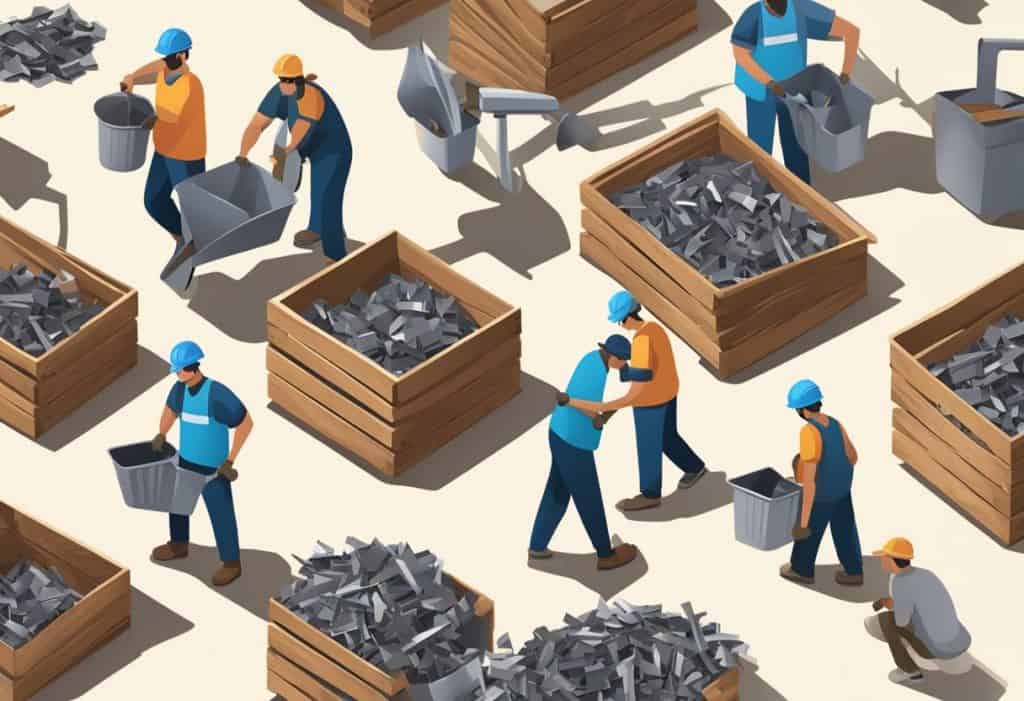
How Recycled Shovel Parts Will Be Reused
Metal Parts
The components will be resorted at the recycling location based on the type of metal. After sorting, the metal is shredded into smaller pieces for melting. The shredding increases surface area, which aids in more efficient melting. These metals are then melted down in a furnace and formed into ingots. Manufacturers can use these nuggets to create new metal products, closing the material loop.
Plastic Handles
Plastic handles from shovels are typically made of high-density polyethylene (HDPE) or polypropylene (PP). Resorting of the plastic types will begin, inspecting the plastic for any non-plastic attachments that have been removed. The plastic is then shredded into flakes and washed to remove dirt and debris. Once clean, the flakes are melted and remoulded into pellets, which serve as raw material for making new plastic products. In some recycling facilities, advanced sorting technologies like near-infrared (NIR) spectroscopy identify and sort different plastic types, ensuring the recycling stream is uncontaminated.
Non-recyclable Parts
Non-recyclable components often include certain types of plastics, rubber grips, or adhesives used in assembly. Your local recycling facilities may not accept these materials because they cannot be adequately processed and must be disposed of.
Final Thoughts
We significantly reduce our ecological footprint by assessing the condition of our tools and choosing to refurbish, repurpose, or recycle. Recycling old shovels, from dismantling to sorting and repurposing, is a testament to our ingenuity and dedication to resource conservation. It ensures that valuable materials, such as metals and plastics, are given new life and contribute to a circular economy, thereby conserving energy, reducing waste, and preserving natural resources.
Frequently Asked Questions
How can I recycle or dispose of old shovels in my area?
We recommend contacting your local waste management authority to recycle or dispose of old shovels. Many areas provide specific guidelines or designated facilities for recycling metal tools.
Are there any facilities that pay for recycled old shovels?
Some scrap metal facilities may offer compensation for old shovels, as they can be repurposed as scrap metal. We advise checking with local scrapyards about their policies and rates for metal tools.
Where can I donate used garden tools, including shovels?
Donating used garden tools, shovels included, can be done at charity shops, non-profits, or community gardens. These places typically welcome tools in good condition for reuse.

